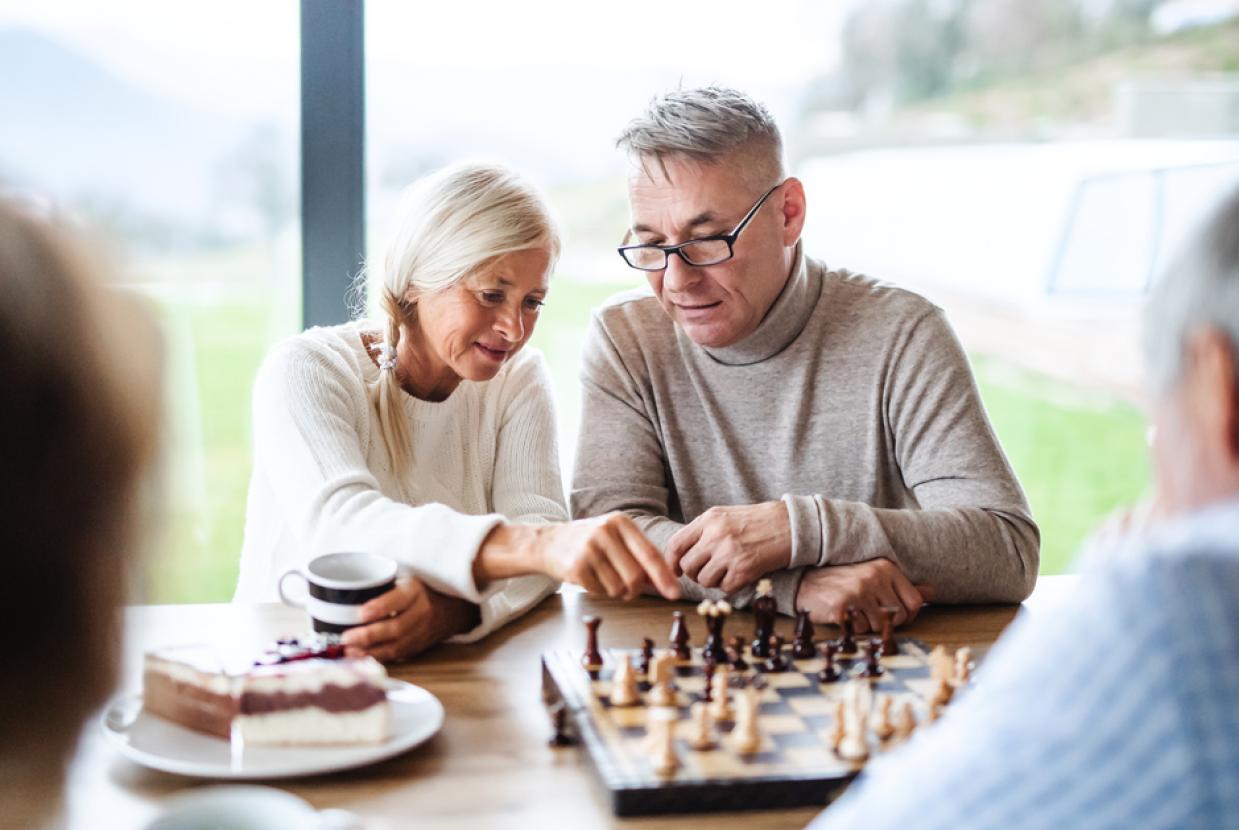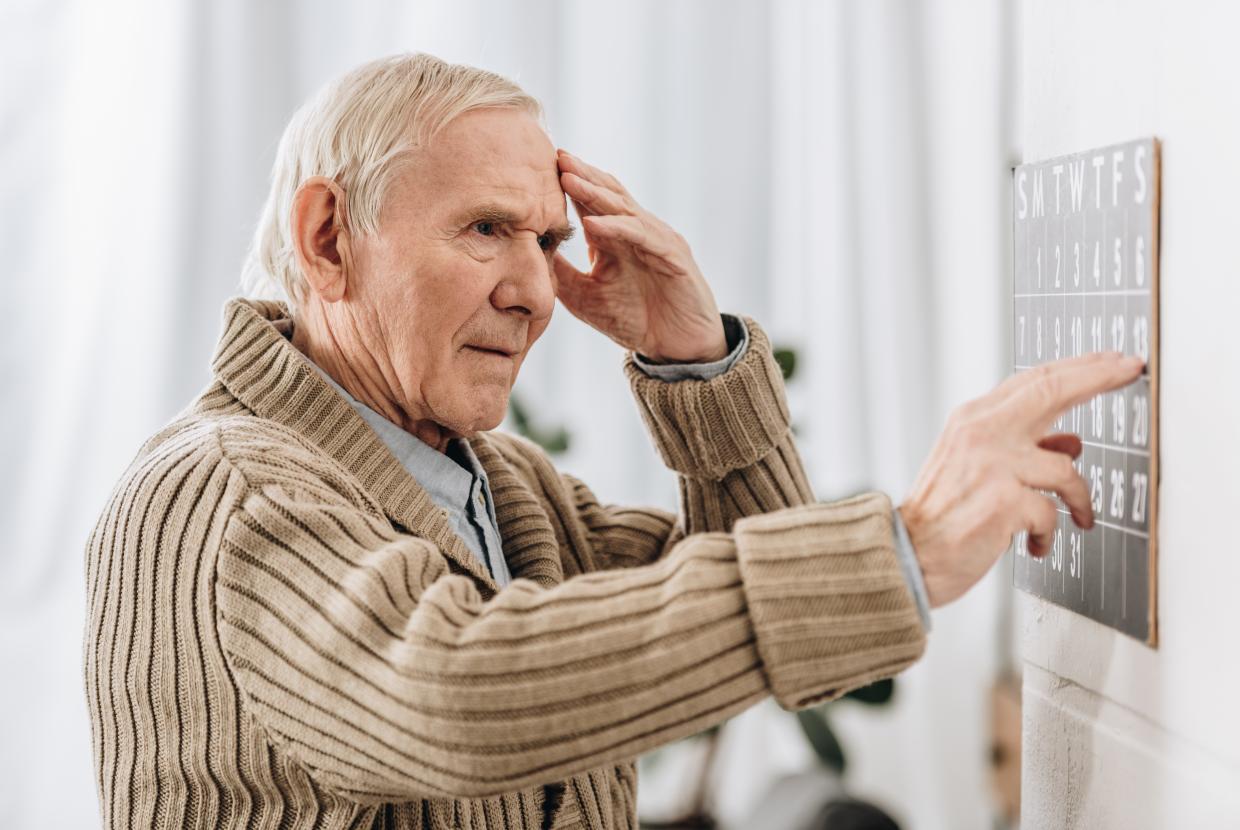10 Ways To Make Dressing Easier For People With Dementia
DementiaAs dementia progresses, a person will need more help with everyday activities such as getting dressed. We share 10 ideas that could help make dressing easier while supporting the person’s identity and personal choice.
Getting dressed is a very personal daily activity and choosing what we wear is often an expression of our identity and how we are feeling. People living with dementia increasingly need more help as time goes on, but it’s important to support them to make their own choices for as long as possible.
There are lots of ways to do this – some people may just need more time, while others may find labels or visual aids useful. If a person does need assistance, it’s important to offer it in a sensitive way.
Here are some of our top tips on how you can make dressing a comfortable, enjoyable experience, encouraging a sense of freedom and independence.
1. Use signs on furniture
A way to help a person with dementia stay independent when dressing is to add signs to wardrobes and drawers so that they can easily find their clothes. Use a combination of words and pictures to make the signs clear and easy to understand.
2. Lay the outfit out
Lay out a full outfit on a plain background in the order the person would put the items on. For example, start with underwear and socks, then a top and trousers, a belt, before finishing with a jumper or cardigan.
Make sure that items aren’t inside out, and that all buttons, zippers and fastenings are undone. If the person needs help, gently suggest the next item to put on or hand it to them. Clear, simple instructions are helpful if they become confused, for example ‘put your arm in the sleeve,’ or ‘put your foot through that trouser leg’.
3. Reduce the outfit options
Choosing what to wear every day can is an important personal choice for many people. Allowing a person with dementia the choice of what they would like to wear each day can help them feel independent and confident.
If the person appears unsure or confused, try reducing the number of options to just a couple of their favourite items. Keep favourite clothing somewhere that’s easily accessible, so it's always close to hand.
4. Take dressing slowly
Giving enough time when dressing can make the experience far more comfortable and relaxing for everyone involved. Rushing a person through the steps can cause distress and anxiety, so keep a slow, steady pace.
5. Accept the unusual
It’s more important to let them make their own decisions, as long as their choice isn’t harming them in any way e.g., wearing clothes that are not appropriate for the weather which means they will be either too hot or too cold.
6. Try a visual aid
Everyone has different style tastes, so try not to assume you know what they would like to wear, or how they would style their hair or make-up. Keeping photos of how they like to look can help to make the process of getting ready easier.
7. Think about layering clothes
Several layers of thin clothing are far easier to adapt during the day than one or two thick layers which can’t be removed. This way, if they person is feeling too warm, a layer can be removed. Too cold, and another can be added.
8. Change clothes regularly
Changing clothes regularly, especially if they’re dirty, is important. However, someone living with dementia may be resistant to this change. If they’re reluctant to get changed, swap the items out for fresh ones when they’re bathing, or let them know you’d love to see them wearing something smart and clean.
Consider buying duplicates of favourite clothes so that the person can wear the clean one while the other is being washed.
Not everybody is used to changing their clothing every day; this should be respected, as long as their clothing isn’t becoming a hygiene issue or making them unsafe.
9. Create a comfortable environment
Think about whether the surroundings are suitable for getting dressed. Is the room warm enough? Do you need to turn on a light, or draw the curtains? Does the person prefer the door to be open or closed? Ask them if they would like to go to the toilet beforehand.
10. Try shopping together
When shopping for new clothes, it’s a good idea to think about how practical they might be. Look for clothing that is easy to put on or take off, such as trousers with no fastenings and an elasticated waistband, or tops that fasten with velcro rather than going over the person's head.
While it might be nice to have lots of new items to choose from to wear, someone living with dementia may not recognise them as their own items and refuse to wear them. Picking out multiple of a favourite item they wear often can help them feel confident in their choice and comfortable when dressing.














































